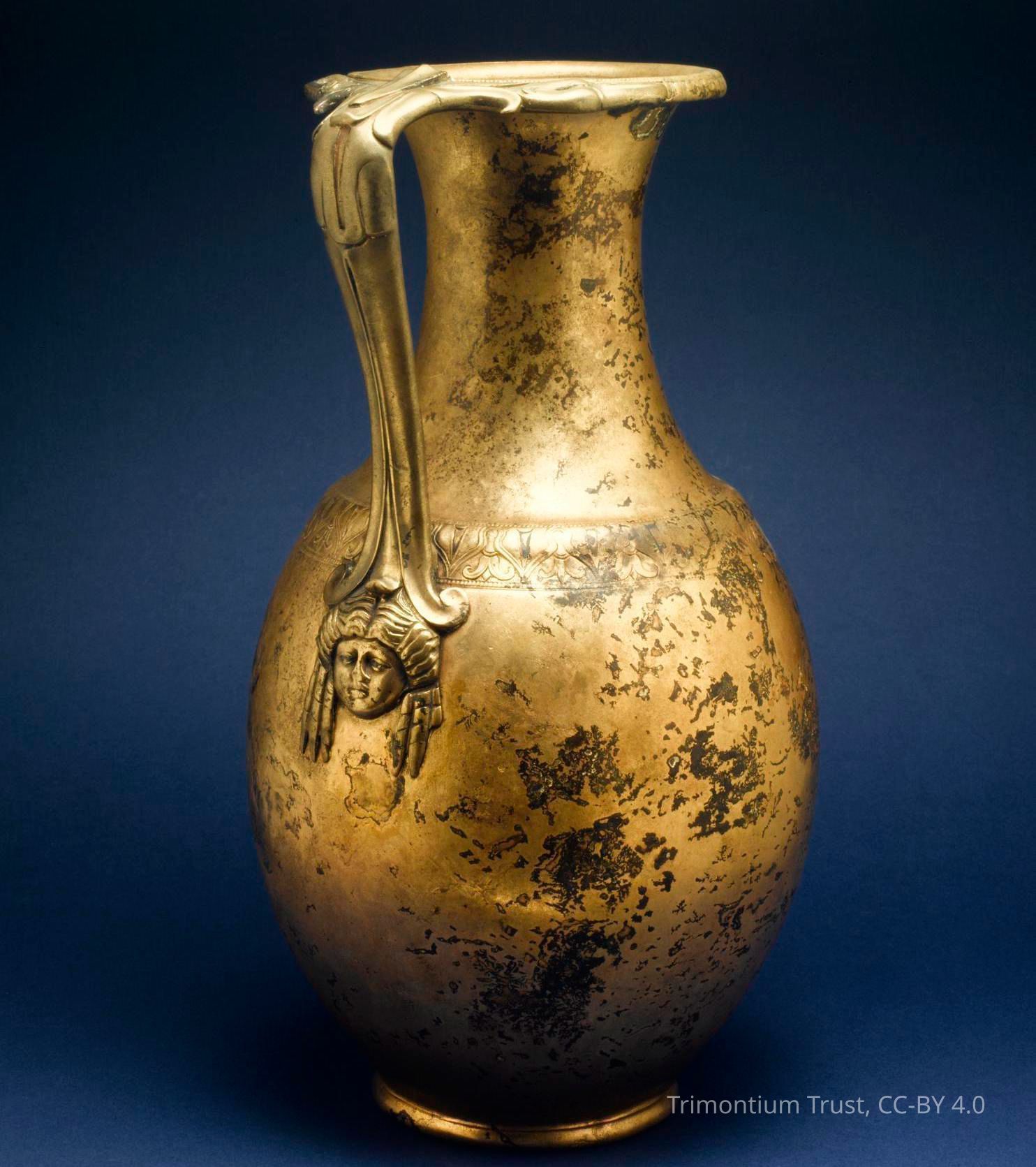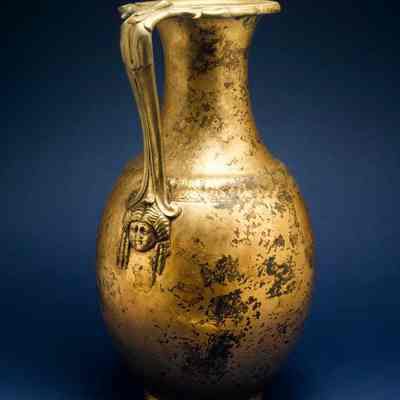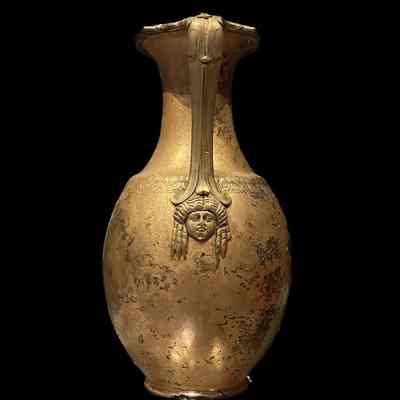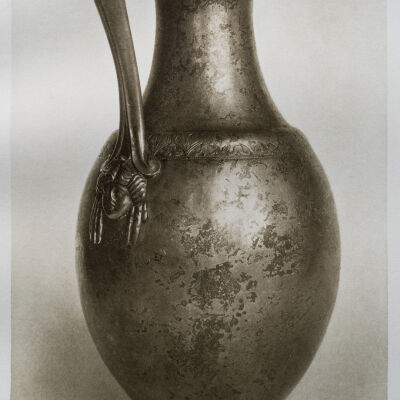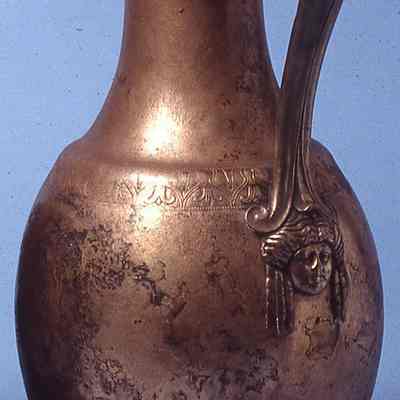Bronze Jug
Name/Title
Bronze JugEntry/Object ID
X.FRA 1194Description
Bronze wine jug with bands of decoration on the body and rim. Ovoid body, flat base and turned-over rim decorated with an ovolo border. It presents a band of decoration around the body with a lotus pattern and traces of silver inlay. The handle is adorned with floral motifs in relief. Grasping the rim, two stylized long-beaked water birds emerge from pointed reeds. The handle ends in a swirl motif framing a female head, with braided hair, hanging curls, and silver inlay in the eyes. From the Roman site at Newstead, late 1st century AD.Use
Used for wine, high status, luxury item.Context
This type of vessel represents the art of the early Roman Empire, strongly influenced by Greek tradition - Greek oenochoë. Similar items have been found at Pompeii and throughout the Empire. This type of luxury goods would have been imported by the Roman army for the upper ranks. Fine tableware was imported from the Mediterranean, the Rhineland and France. This vessel was likely imported from Italy.Collection
National Museums ScotlandCategory
Vessels
Tableware, Bronze objects
Acquisition
Accession
X.FRA 1194Source (if not Accessioned)
National Museums ScotlandMade/Created
Date made
68 - 100Time Period
Late 1st centuryPlace
Location
Trimontium Roman Fort Site, NewsteadCountry
Scotland* Untyped Place
United KingdomEthnography
Cultural Region
Location
NewsteadCountry
Scotland* Untyped Cultural Region
United KingdomCulture/Tribe
Roman
